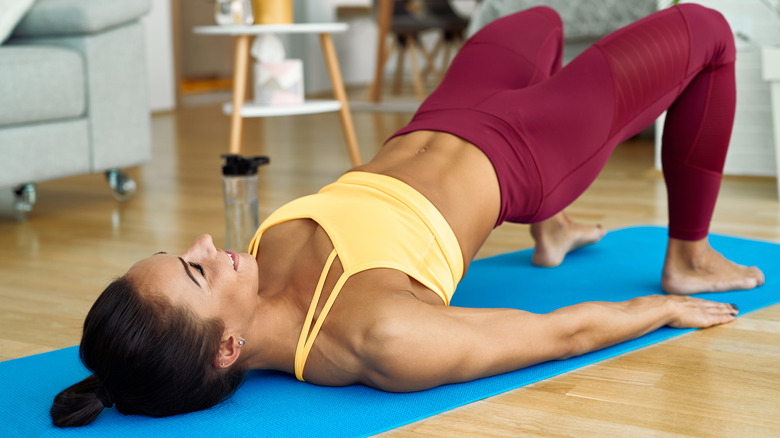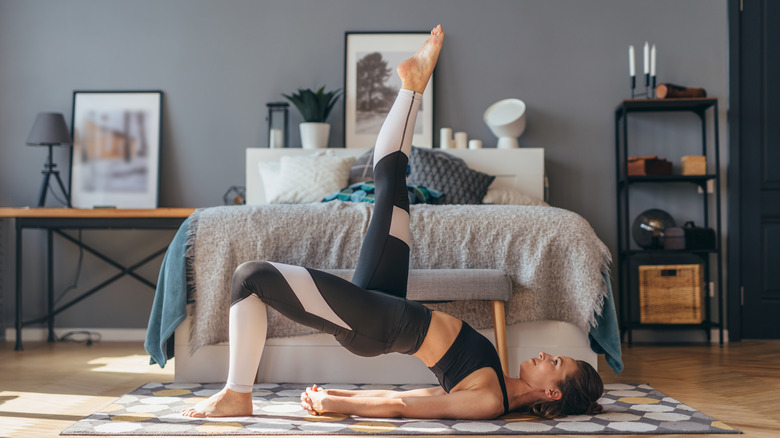What Hip Bridges Really Do For Your Body
From the outside, hip bridges look a little funky. You lay on your back, plant your feet, and push your hips up in the air. It's like something out of a bad retro workout video. But looks can be deceiving. And everyone from yoga enthusiasts to bodybuilders will tell you just how important that funky little move can be.
Hip bridges work pretty much your entire lower body. They activate your minor and major gluteal muscles, lower back, core, hamstrings, and hips, according to AZCentral. The focus on these muscles make it one of several key isolation exercises that can help round out more-general workouts, as described by The Nest. Spot training for weight loss is impossible, but isolation exercises are the next best thing. They allow you to work and tone specific muscles or muscle groups.
This is especially helpful when you're training around an injury or working to improve a weak spot. It's one reason Dwayne Johnson is such a fan. He showcased the power of the hip thrust — a weighted version of the hip bridge popular in weight lifting and body building circles — in a 2018 Instagram post. The post shares a video of Johnson going through a set of hip bridges. The post's caption lists off several of the injuries Johnson is working around, including damage to his knees and lower back.
How hip bridges affect your body
The way your hip bridge affects your body depends entirely on your form, according to Shannon McClintock. She is the master trainer for barre3, a successful program blending Pilates and yoga. It's not exactly the iron heavy approach The Rock uses, but it certainly gets results.
McClintock spoke to Shape in 2018 and broke down the two big ways that hip bridges can impact a person's body. One is by stretching large muscle groups without doing any toning. The other — which Brie Larson uses for her hip thrusts mentioned in this People article — is all about engaging the glutes, core, and hamstrings to protect the lower back.
To get a good stretch out of a hip bridge, you need to lift most of your back off the floor. McClintock says this causes your back to arch, which gives a good stretch to the front body as well as the hip flexors. Make sure to keep your shoulders relaxed and down so you don't cramp your upper back, though. And if you're looking to add some weights, switch to a hip-only raise that leaves your back on the floor. McClintock explains that this engages the core, hamstrings, and glutes to spare your lower back any damage. And while a little curve in the spine is alright during a stretch, it's definitely a no when you're trying to tone or if you're adding weights.


